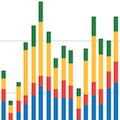Abstract
Background: We aimed to evaluate a testing program to facilitate control of SARS-CoV-2 transmission at a large university and measure spread in the university community using viral genome sequencing.
Methods: Our prospective longitudinal study used remote contactless enrollment, daily mobile symptom and exposure tracking, and self-swab sample collection. Individuals were tested if the participant was exposed to a known SARS-CoV-2 infected person, developed new symptoms, or reported high-risk behavior (such as attending an indoor gathering without masking or social distancing), a member of a group experiencing an outbreak, or at enrollment. Study participants included students, staff, and faculty at an urban, public university during Autumn quarter of 2020.
Results: We enrolled 16,476 individuals, performed 29,783 SARS-CoV-2 tests, and detected 236 infections. 75.0% of positive cases reported at least one of the following: symptoms (60.8%), exposure (34.7%), or high-risk behaviors (21.5%). Greek community affiliation was the strongest risk factor for testing positive, and molecular epidemiology results suggest that specific large gatherings were responsible for several outbreaks.
Conclusion: A testing program focused on individuals with symptoms and unvaccinated persons that participate in large campus gatherings may be effective as part of a comprehensive university-wide mitigation strategy to control the SARS-CoV-2 spread.
